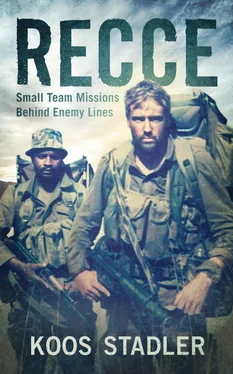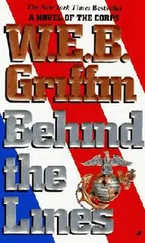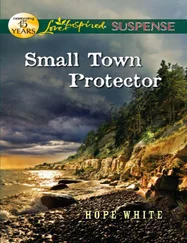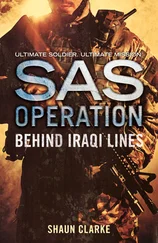That night every muscle in my body ached. I was sunburnt red like a tomato. My hands were a mess. I was dead tired, but determined to go the full six feet the next day. However, my swollen and blistered hands wouldn’t let me touch a breakfast spoon in the morning, let alone a shovel. Mom objected to me doing any further digging, threatening Dad with all kinds of punishment if he dared take me to the gravesite again. But once she realised that I had no intention of giving up, she wrapped my hands in bandages and covered them with a pair of gloves. Out at the gravesite I managed another few hours of digging. By that afternoon I was at four feet, but then my hands wouldn’t grip any more.
But I simply had to finish, since the funeral was in two days’ time. I decided to take one tiny patch at a time and go the full depth, then move on to the next, steadily working to dig the rest of the grave piece by piece.
This experience taught me that where I had a clear and worthy goal, I needed to apply every ounce of energy to reach it, regardless of the cost. My father arrived that afternoon with a seasoned labourer, who dug the remaining two feet in less than two hours. But that didn’t bother me. I knew that, given time, I would have managed it. My sore body and blistered hands were a kind of reward – and a silent tribute to the two guys who had died.
In 1973 my twin sister and I were sent to boarding school in Upington to start high school. As the only minister’s son among the farm boys from the Kalahari I was an easy target and soon baptised Dominee (reverend), or sometimes even called Dissipel (disciple) or Priester (priest). But I also made good friends and survived fairly easily.
Long weekends and holidays were spent with my folks in South West Africa. Having turned fifteen in March 1974, I would take up my favourite pursuit of stalking small game in the veld, roaming my old haunts outside Ariamsvlei and often hunting with my dad during hunting season. I also started hiking long distances with a crude backpack on the dirt roads leading from the farms, often sleeping over at the houses of my parents’ friends.
The year 1974 also saw change coming to our otherwise quiet town. Large convoys of military vehicles would pass through, often stopping over to refuel or to overnight on the large square next to the BSB (Boere Saamwerk Beperk), the cooperative serving the district’s stock farmers.
Scores of army trucks and armoured cars would be parked in long queues along the square, while hundreds of troops would all of a sudden be walking about, playing ball next to their encampment or just hanging around and chatting with the few curious locals.
I soon learned that there was a war on in Ovamboland along the northern border of South West Africa. Since 1966 insurgents from the South West Africa People’s Organisation (SWAPO) had been infiltrating from neighbouring Angola into the farming areas, killing civilians on the farms and planting landmines on the roads in the northern border areas in their bid for an independent Namibia.
In 1974 the South African Defence Force (SADF) took over the responsibility from the South African Police for guarding the 1 680-km border between South West Africa and its northern neighbours, Angola and Zambia. Although I didn’t take note of it then, in June of that year 22-year-old Lieutenant Fred Zeelie became the first South African soldier to be killed in the Border War. Zeelie was also the first Special Forces soldier to lose his life in the war.
What I also did not know in 1974 was that a massive – and eventually long drawn-out – civil war was looming in Angola. In April of that year, following the so-called Carnation Revolution in Lisbon, Portugal indicated its intention to give up its colonial rule of the country. The three main Angolan liberation movements – Holden Roberto’s FNLA, Jonas Savimbi’s UNITA and the Marxist MPLA of Dr Agostinho Neto – started competing for control. Fighting broke out in November 1974, starting in the capital city, Luanda, and spreading to the rest of the country.
Angola was soon divided between the three groups. The FNLA occupied northern Angola and UNITA the central south, while the MPLA mostly occupied the coastline, the far southeast and, after capturing it in November, the oil-rich enclave of Cabinda. Negotiations between the parties and the colonial power led to the signing of the Alvor Agreement on 15 January 1975, naming the date for independence as 11 November 1975 and setting up a transitional government. The agreement ended the war for independence but marked the escalation of the civil war. Fighting between the three liberation forces resumed in Luanda hardly a day after the transitional government took office. The coalition established by the Alvor Agreement soon came to an end.
I became aware of these events only when convoys of white Portuguese-speaking refugees started passing through Upington, their cars loaded to capacity with all their worldly belongings. The MPLA, backed by the Soviet Union and Fidel Castro’s Cuba, gained control of Luanda on 9 July 1975. Many white Portuguese, having supported the colonial regime, felt threatened and fled the country in great haste, leaving most of their possessions behind. I also could not have known then that within a few years I would be taking part in the Border War, fighting shoulder to shoulder with many ex-Angolans.
In late 1975 the SADF launched Operation Savannah, a large-scale offensive deep into Angola. The operation was initiated in secret on 14 October, when Task Force Zulu, the first of several SADF columns, crossed from South West Africa into Cuando Cubango province. The operation was aimed at eliminating the MPLA in the southern border area, then in southwestern Angola, moving up into the central regions, and finally capturing Luanda.
With the Angolan liberation forces busy fighting each other, the SADF advanced rapidly. Task Force Foxbat joined the invasion in mid-October. The territory the MPLA had gained in the south was quickly lost to the South African advances. In early October South African advisors and antitank weapons helped to stop an MPLA advance on Nova Lisboa (later Huambo). Task Force Zulu captured Villa Roçadas (later Xangongo) then Sa da Bandeira (Lubango) and finally Moçamedes (Namibe) before the end of October.
The South African advance was halted just short of Luanda, and the forces started withdrawing late in January 1976. Many reasons were given for the termination of the operation, but in essence South Africa at that time stood alone in its quest to oppose communist expansionism in southern Africa. Moderate African countries like Zambia and Côte d’Ivoire, which had originally requested South Africa to intervene, could not provide any assistance themselves.
Western countries like the United States (US) and France had promised support but never committed. US support of both the FNLA and UNITA was sporadic and inconsistent, and finally came to an end at the critical moment when South Africa was poised to take Luanda. Neither UNITA nor the FNLA was politically strong enough to sustain a takeover of Luanda. [2] On 19 December the US Senate passed a bill, known as the Clark Amendment, to force the White House to terminate its support of both UNITA and the FNLA. The senators were clearly not eager to be trapped on the side of the apartheid regime. See Scholtz, L, The SADF and the Border War . Tafelberg Publishers: Cape Town, 2013.
DESPITE the new visitors to our town, the Border War was not at the top of my mind. I was fighting another war – my own battle for survival at boarding school, where things had become rather challenging for me.
I became a prefect at the too young age of sixteen, when I was in standard 9 (grade 11). As the only school prefect residing in the boys’ boarding house, I often had to stand my ground against the toughest of the district.
Читать дальше












